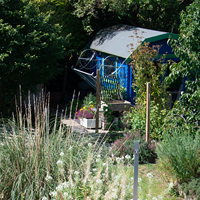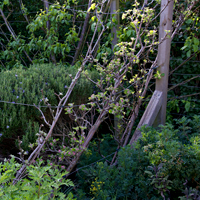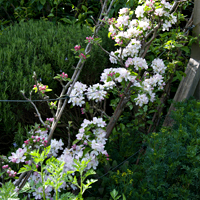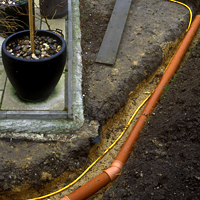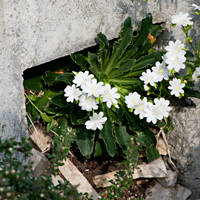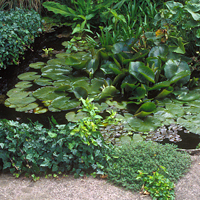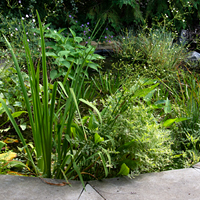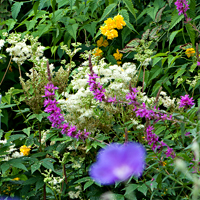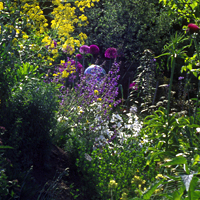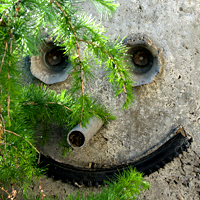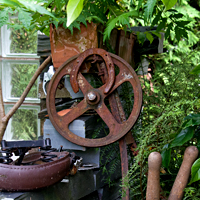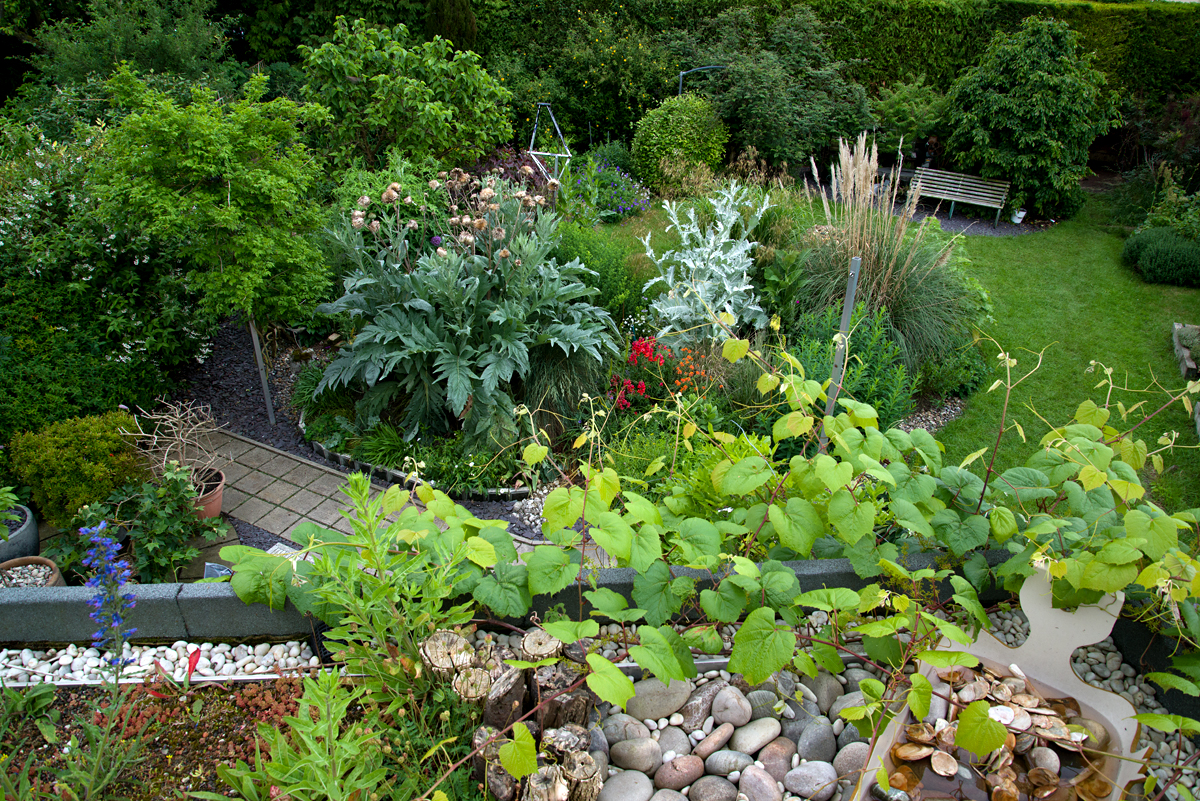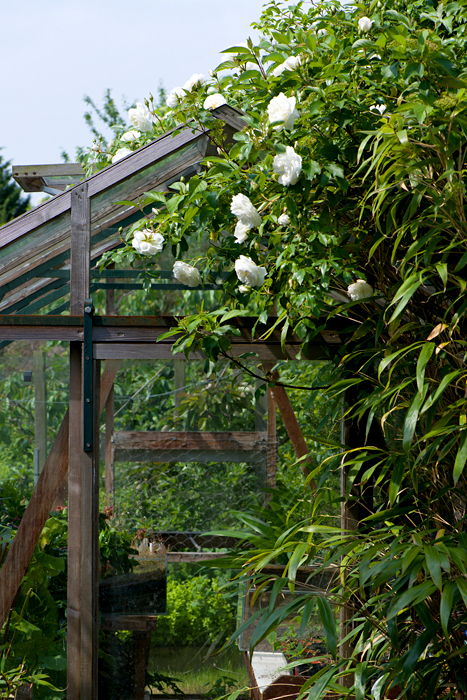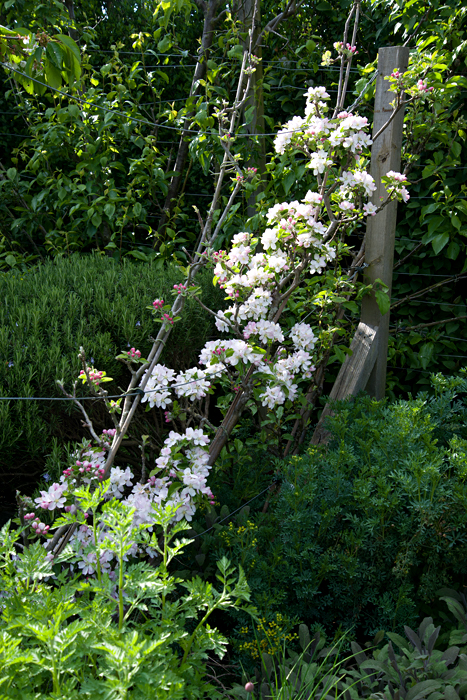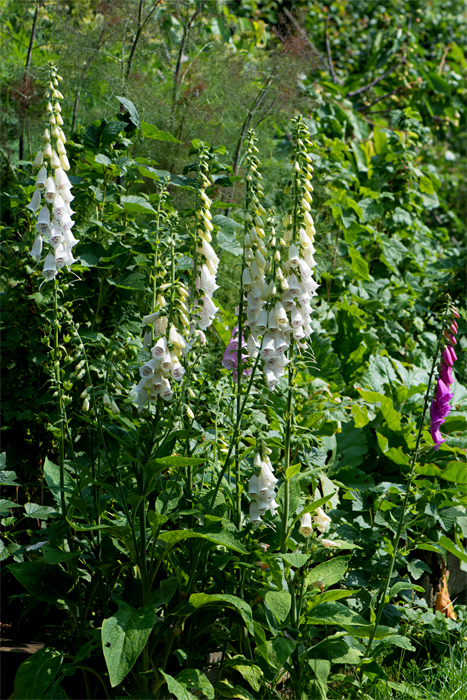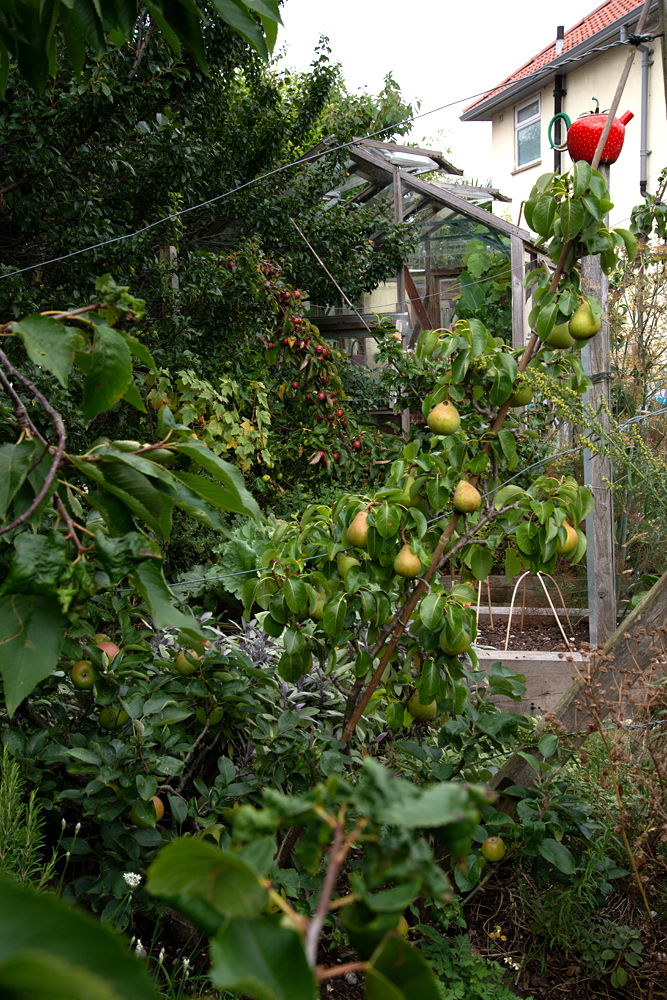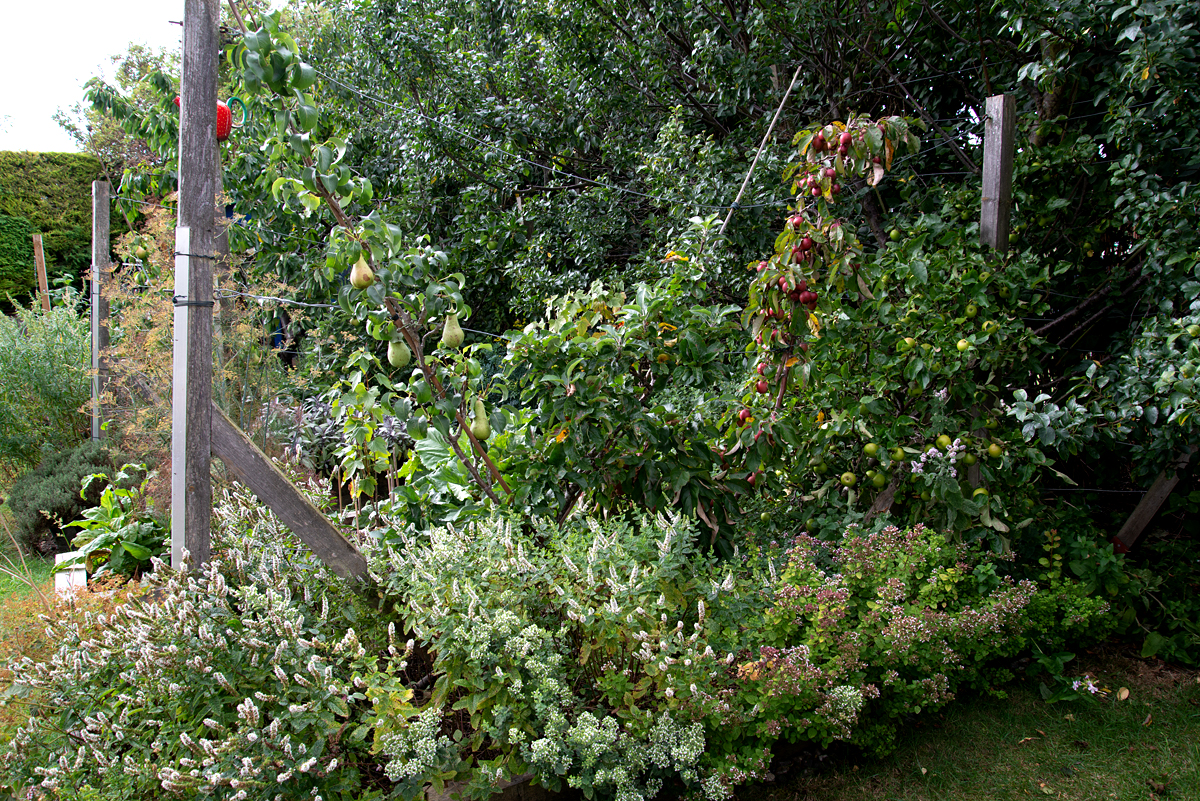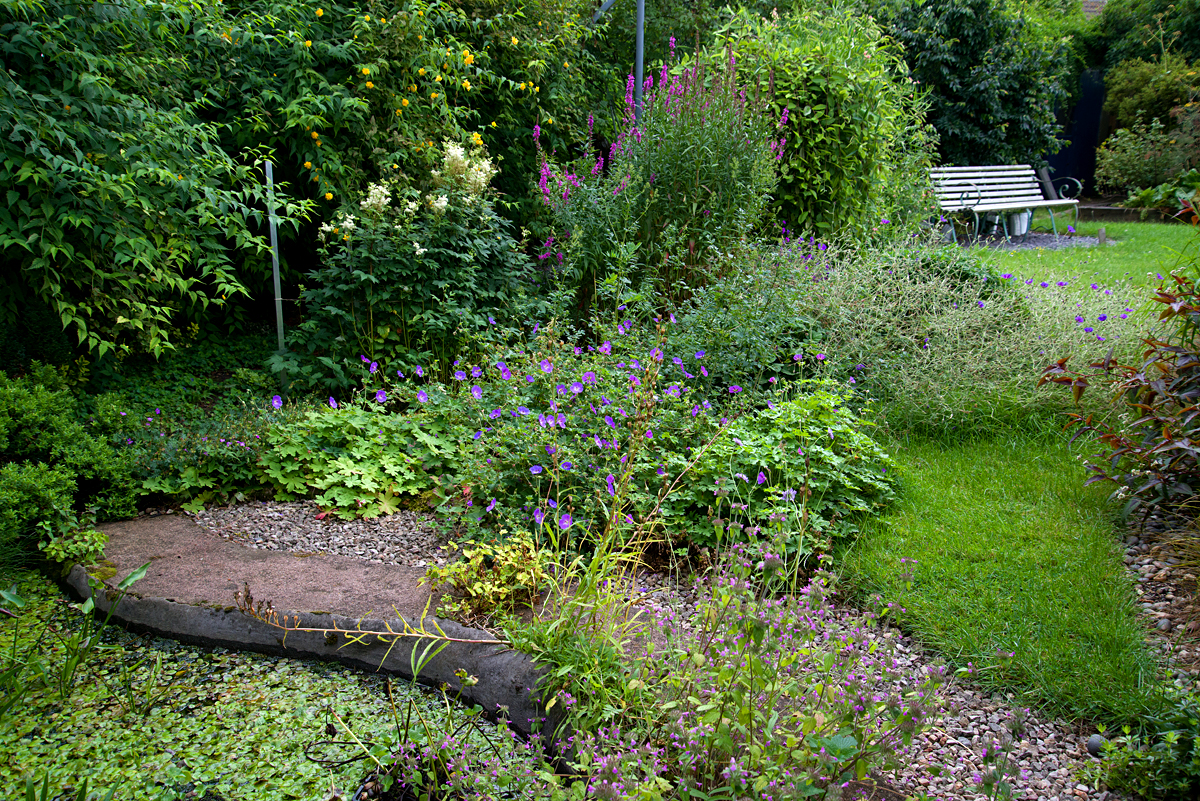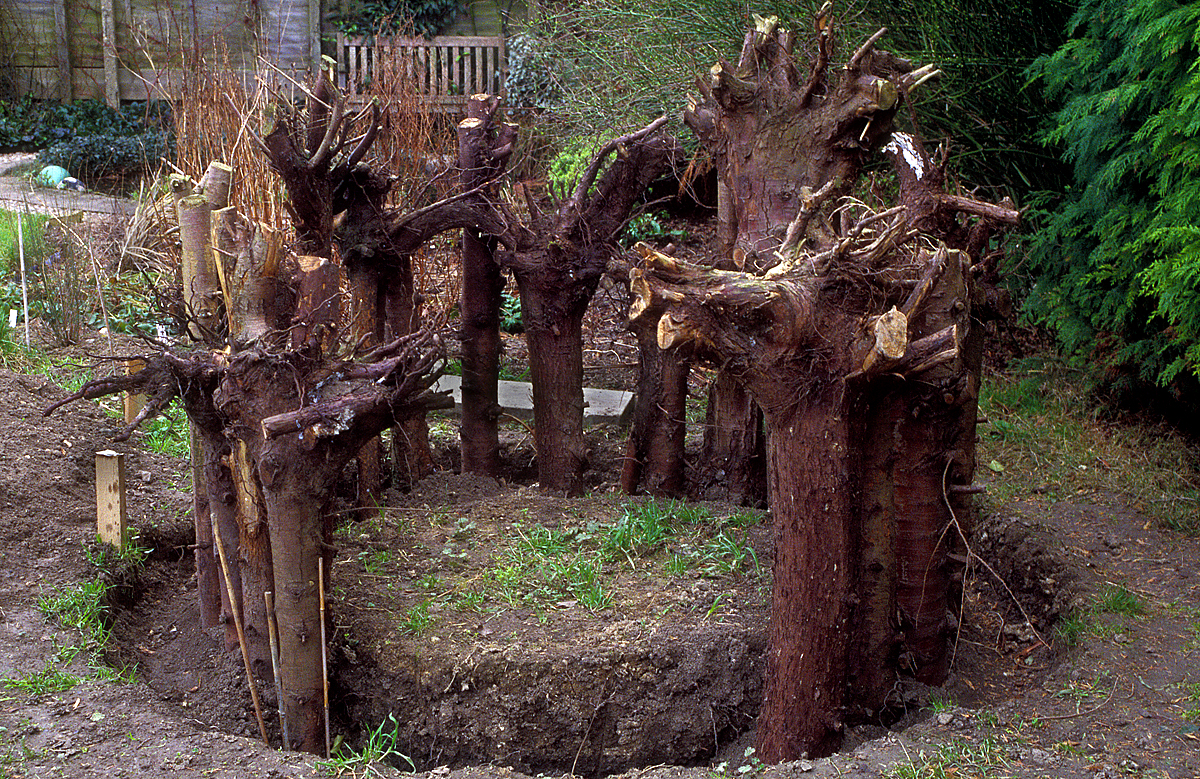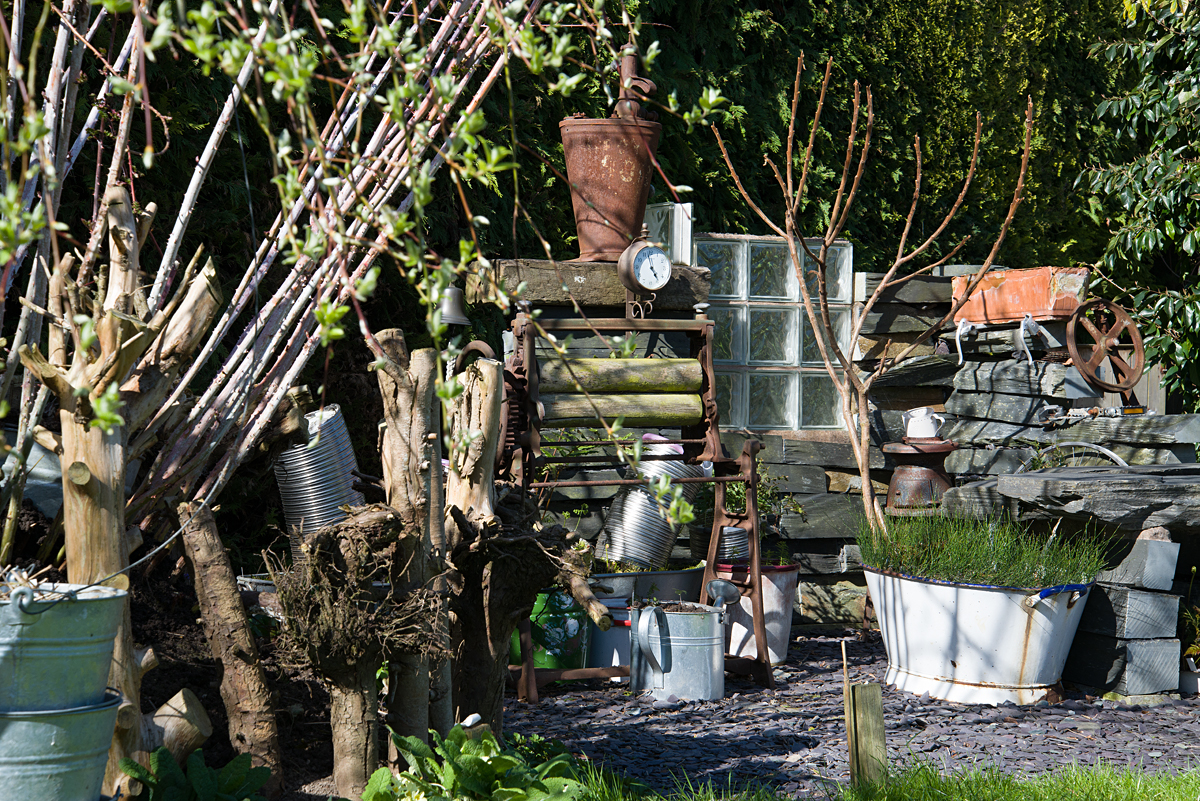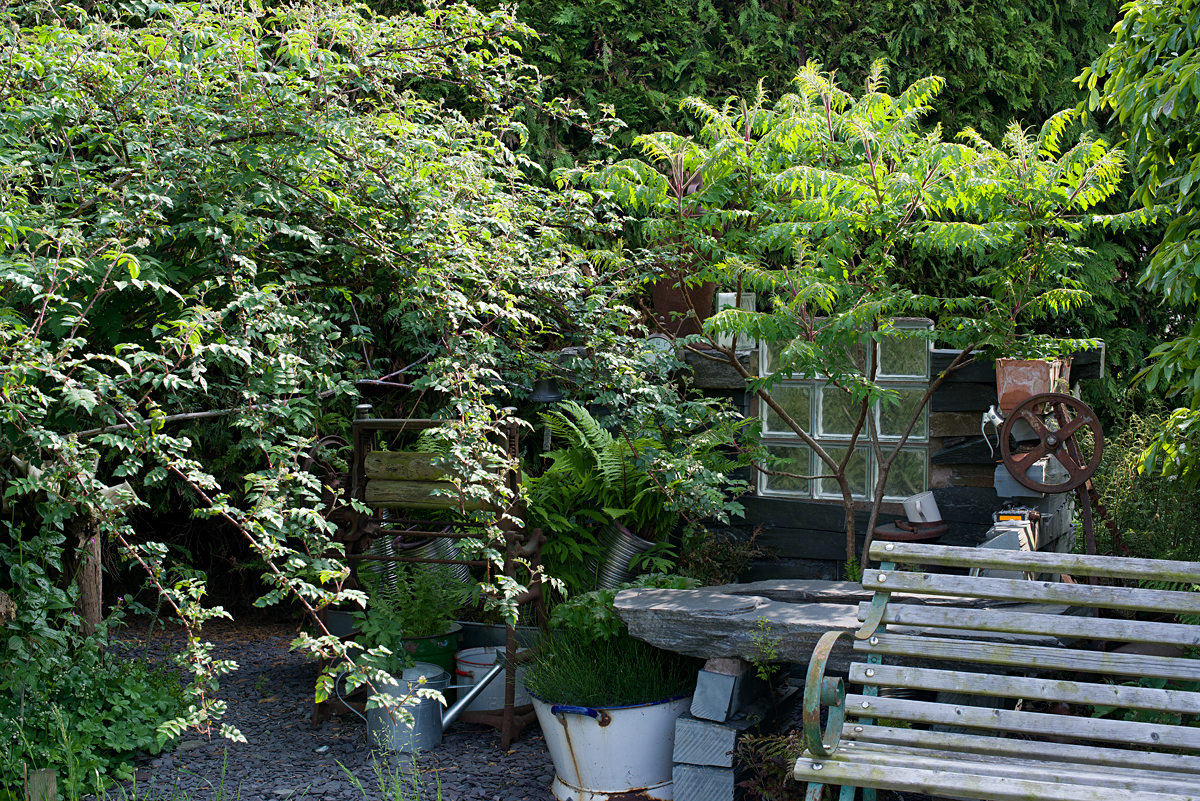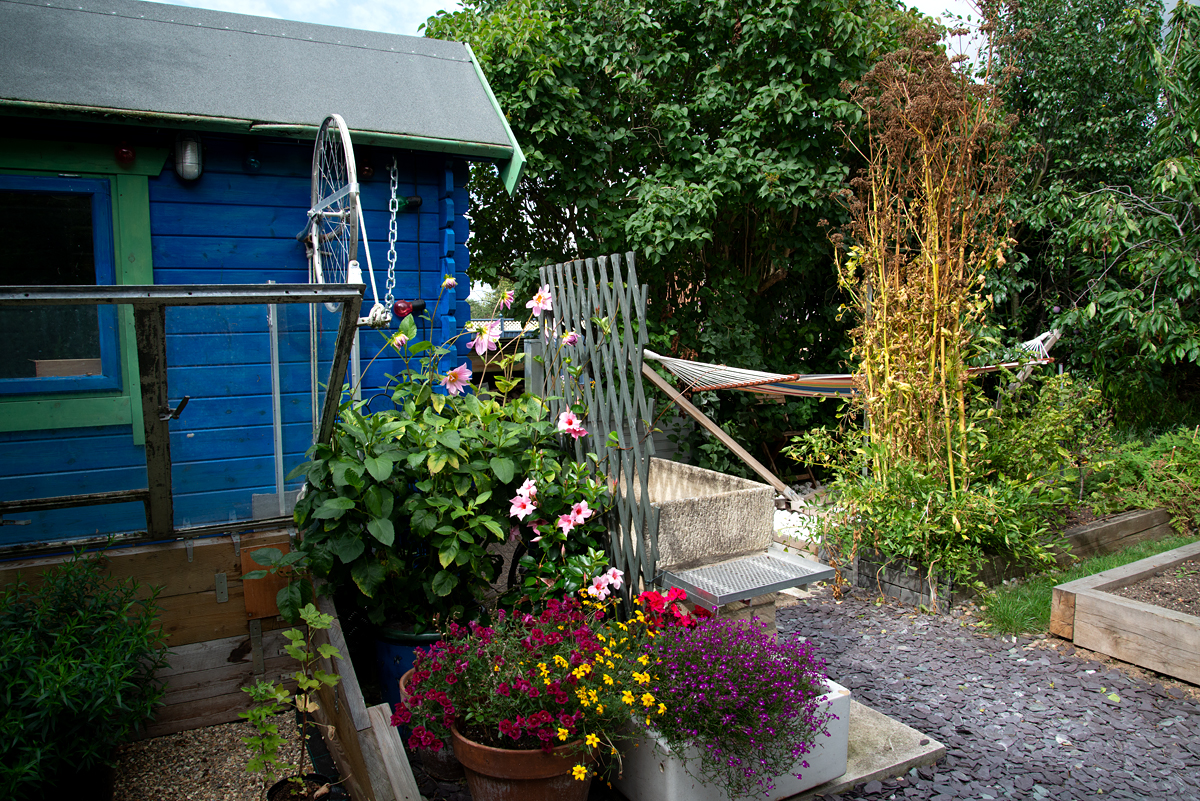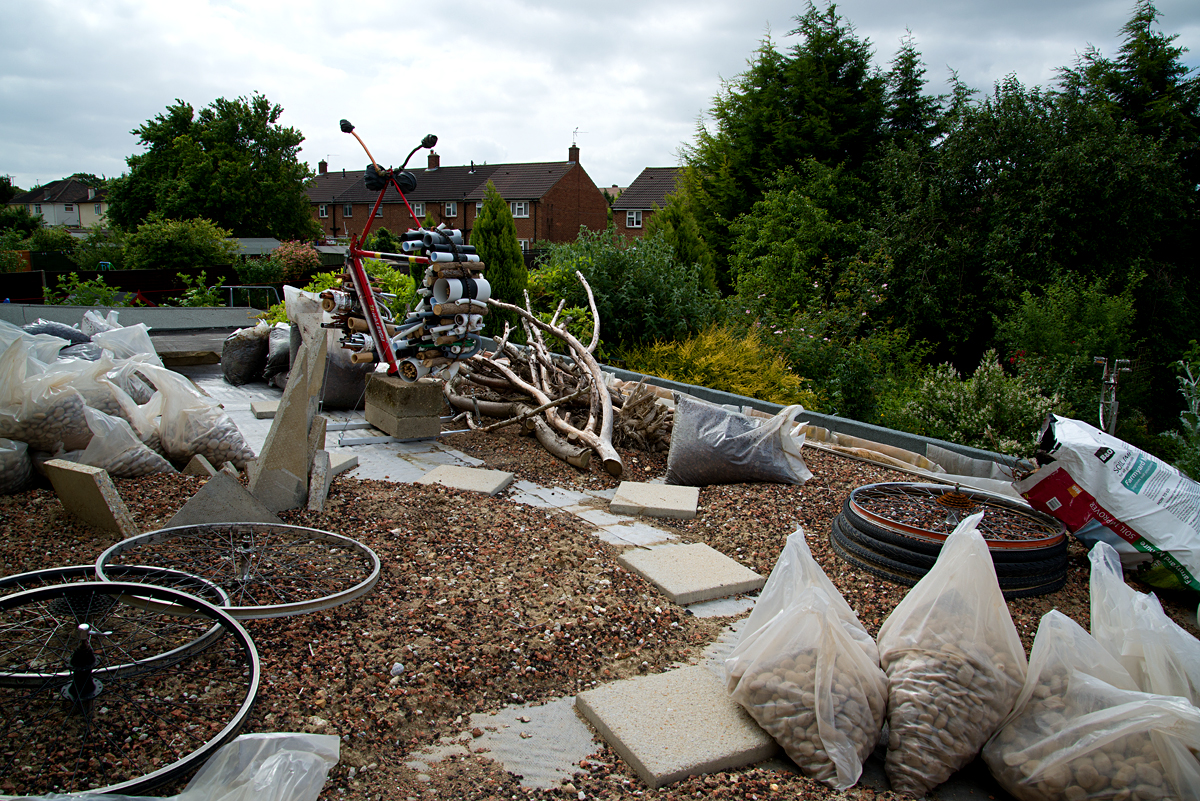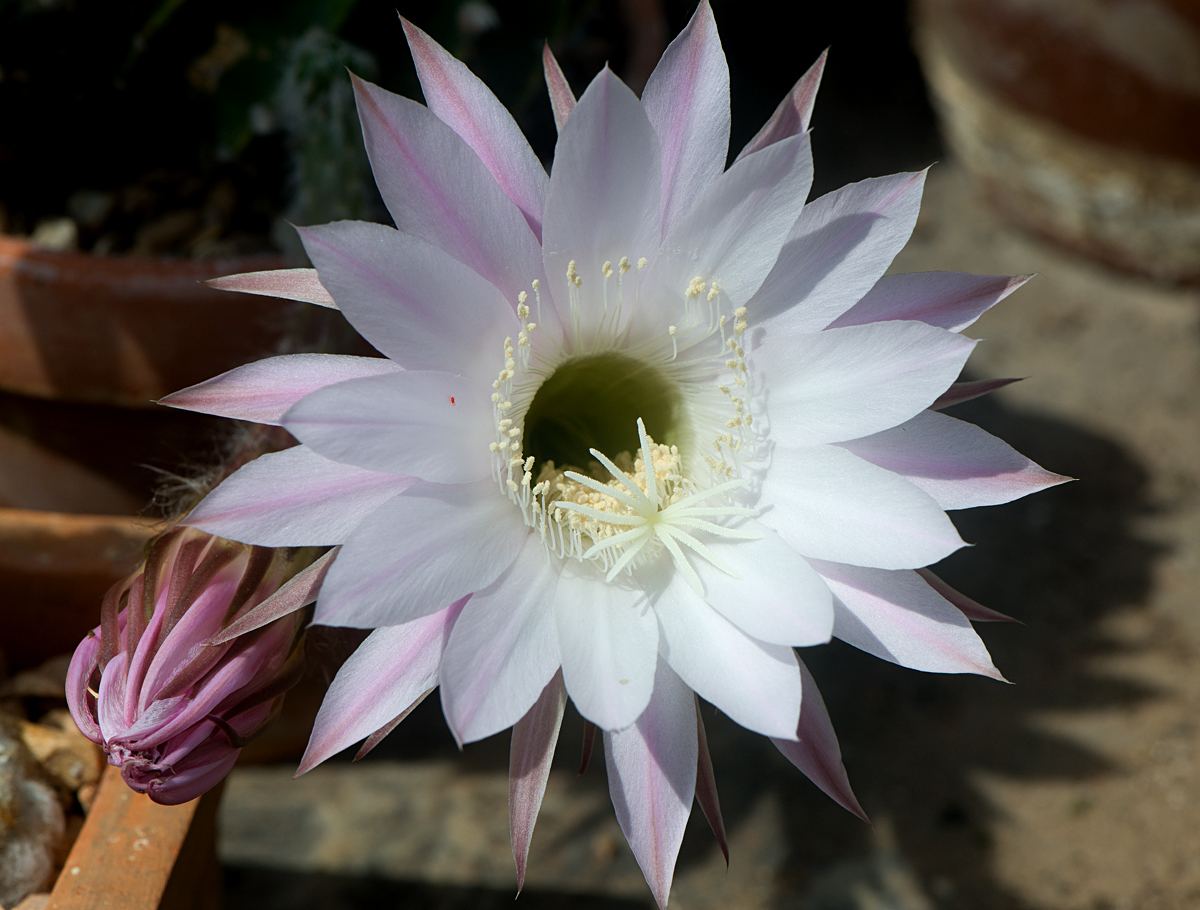What kind of a garden has Françoise created? She started it with her love of plants, to be able to grow, work and be with plants, and this has continued to be her main focus. She also aims to garden using ecological principles alongside some more traditional horticultural practices. Here are the main elements that she works with:
- To create a broad range of habitats with many plants suited to different types of environments: for example habitats with soils ranging from dry to moist to wet and from poor to rich in nutrients, such as a pond, a bog or a green roof; habitats made from different materials including logs, stones and gravel, such as an alpine garden or a stumpery; within each habitat, to include many types of plants in order to create rich mini ecosystems. However, we are not talking here of gardening on a grand scale in a vast estate - each habitat can be small and adapted to the size of the garden, as is the case in Françoise’s plot.
- To include mature hedges with different species of shrubs and trees. In her garden, Françoise inherited an old lilac and privet hedge on one side and a conifer hedge on another. Although she would have preferred the conifers to be a variety of native tree species, she kept the hedge, as it was mature, but she planted a new hedge on the third side with a variety of shrubs. Hedges are the best habitats for birds who need them for nesting, roosting and feeding.
- To use water sparingly. Water is a scarce resource. Full stop. Also, rain water is best for plants and ponds. So Françoise does not add irrigation systems to her borders, nor does she water them after the initial planting. She chooses plants which cope with the conditions and she improves the soil by adding compost or manure. However, she waters plants in pots, as their roots cannot grow naturally toward the moisture in the soil. For this need, she is gradually, over time, adding more rain water storage within the garden, with the aim to eventually rely mostly on this water source.
- To garden mostly organically. Françoise does not use any pesticides in the garden. She is not a commercial grower, so she can accept that some of her plants will be affected by pests and diseases. Likewise, herbicides have no place in a private garden. A weed is a plant in the “wrong” place: it should be controlled by prevention and hand removal, not by using a chemical which kills not only the plant but the wildlife living on it. And this includes slug pellets!
- For fertilisers, Françoise uses home made compost and bought soil improver, as well as manure where it is needed, such as in the fruit garden. However, she does use slow release artificial fertilisers for plants in pots: these plants need the nutrients, which are released slowly and less wastefully. But she could do a lot more on this front, for example by growing a nettles patch and making liquid feed from them. A garden should be able to provide more of its needs within itself, as a living ecosystem - she will keep thinking on this to improve her own methods.
- To encourage wildlife. Some of the above points aim to achieve just that. Françoise has planted many herbaceous perennials which together provide a long flowering season for pollinating and other insects. In spring, the early bulbs are visited by bees. In summer, the herb garden is buzzing with insects. In the autumn, the seed pods are home to many beetles. Dragonflies and bats fly around, tiny frogs jump out of Françoise’s feet, birds eat her cherries - her garden is full of wildlife and it doesn’t care whether the plants are native or not! Variety is key and so is allowing plants to grow, flower, set seeds and die back in peace, apart from a few bullies such as the teasels and rosebay willowherbs which need to be controlled.
- The best way to sum it up may be thus: Françoise controls her garden but the plants control her. And for her that makes it a tiny but perfect paradise.







